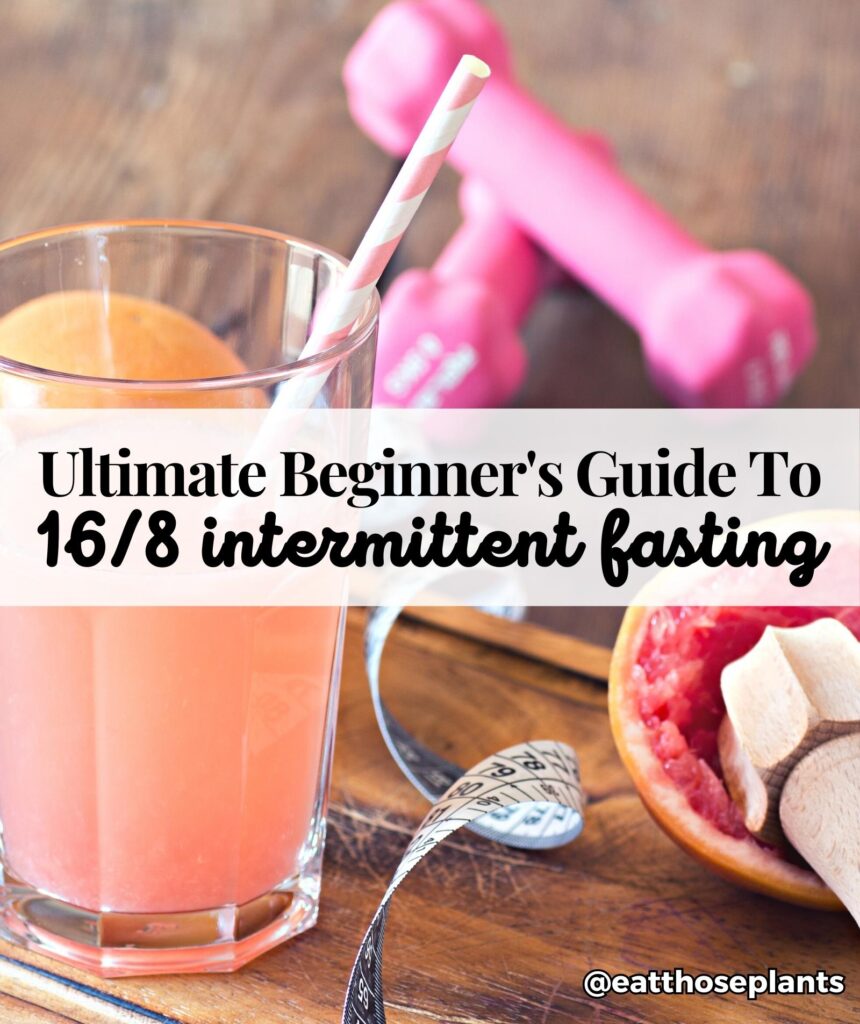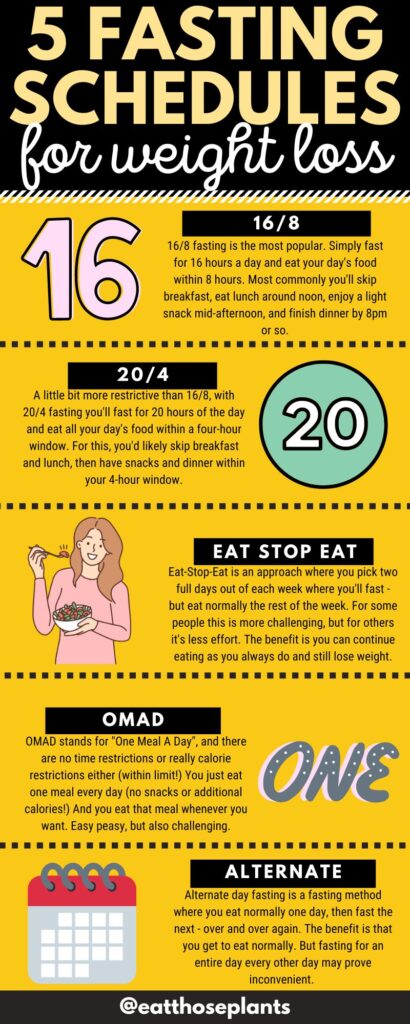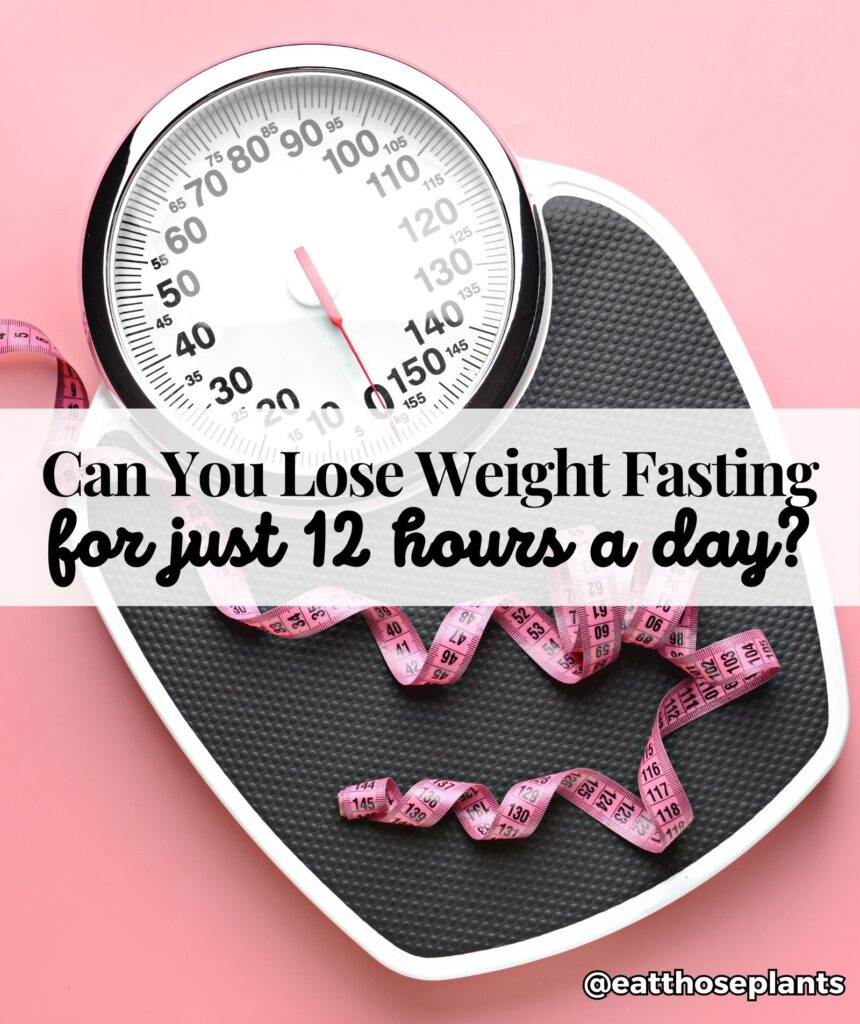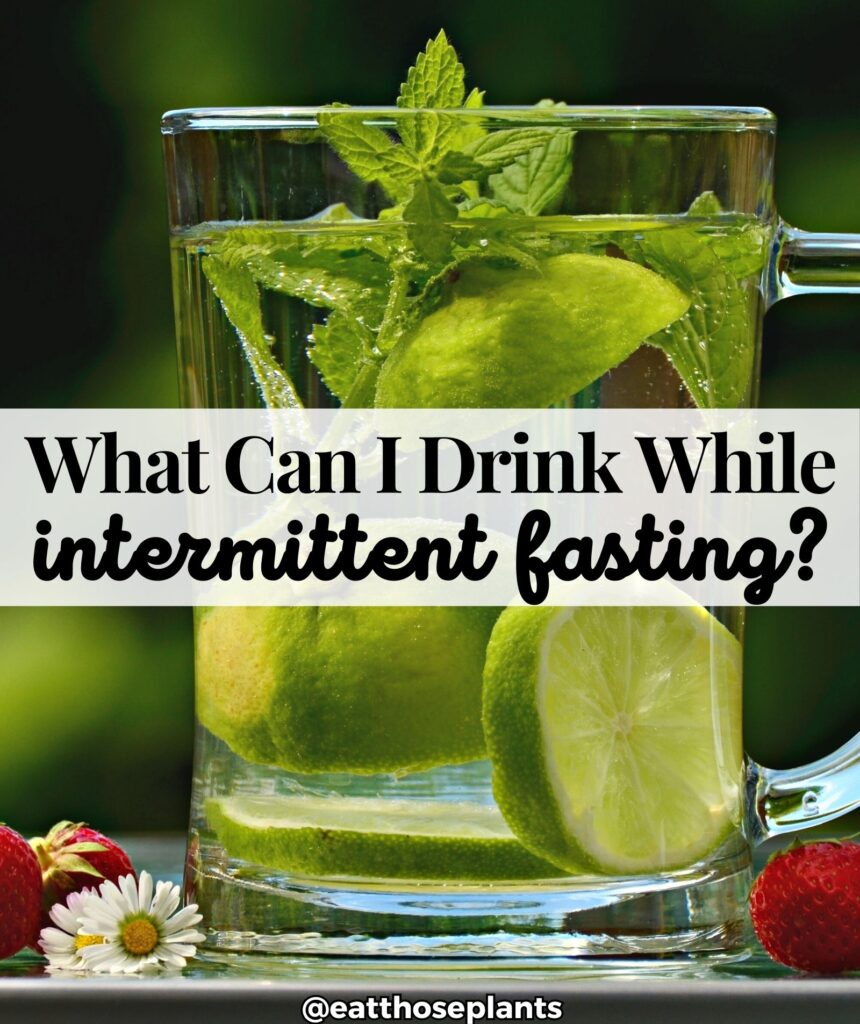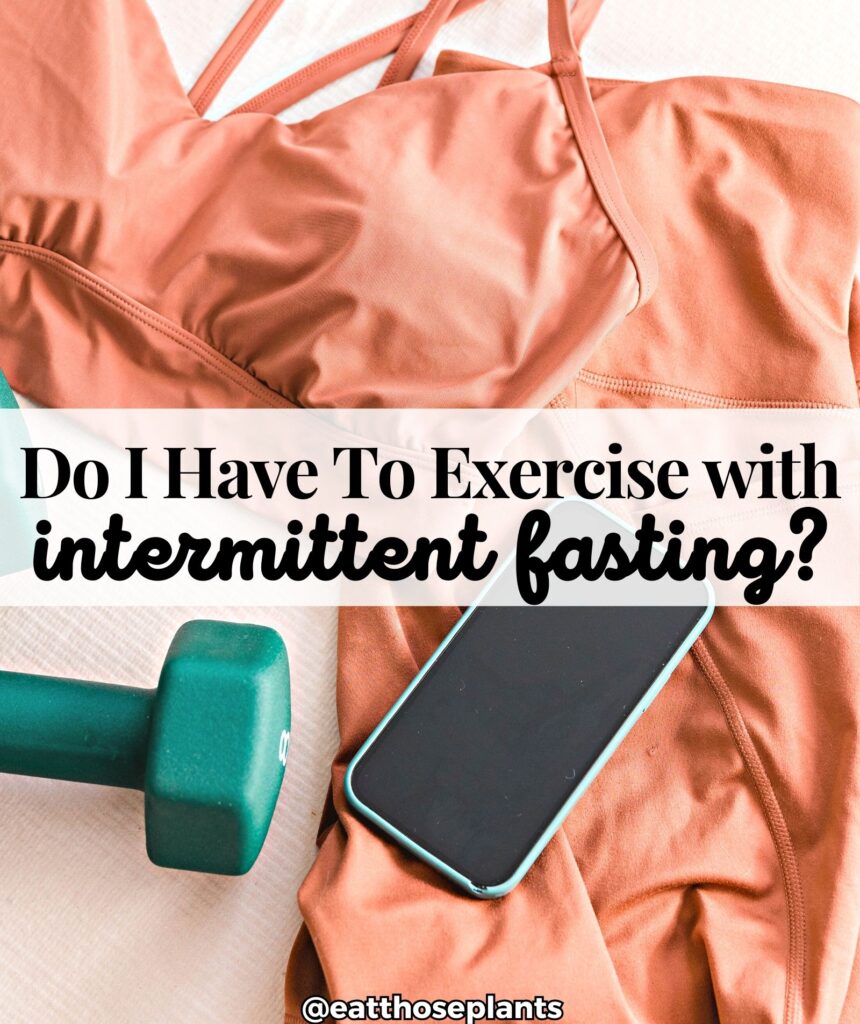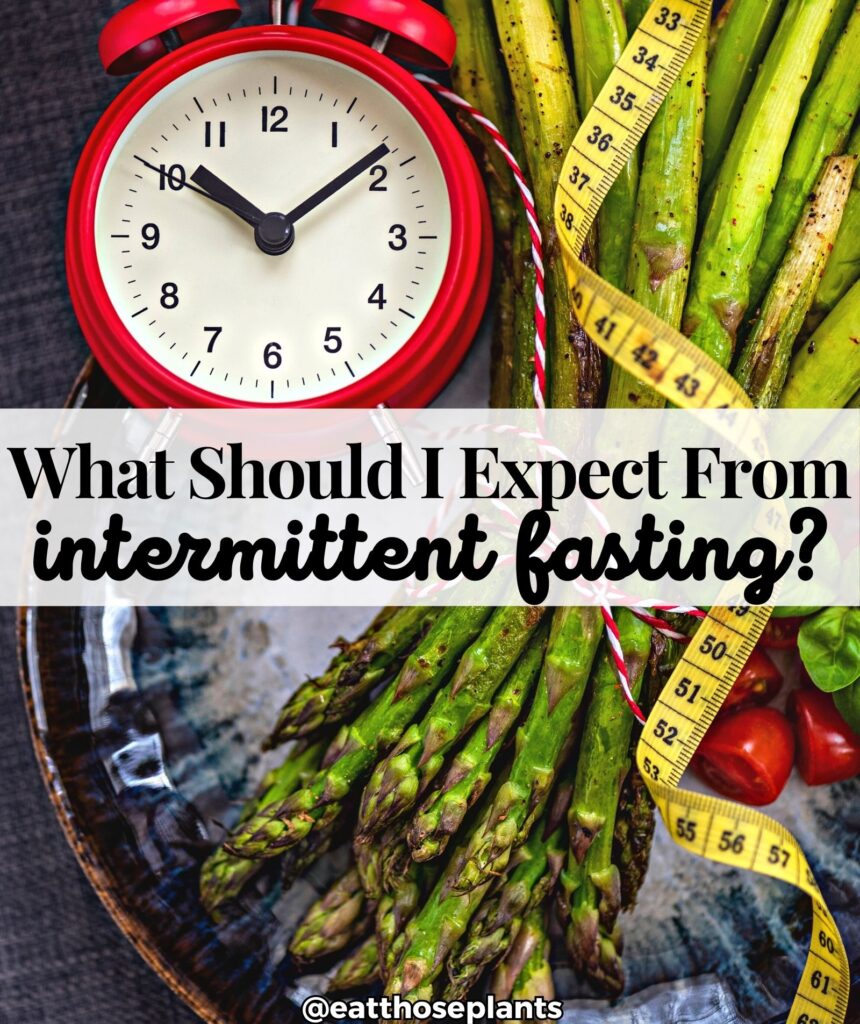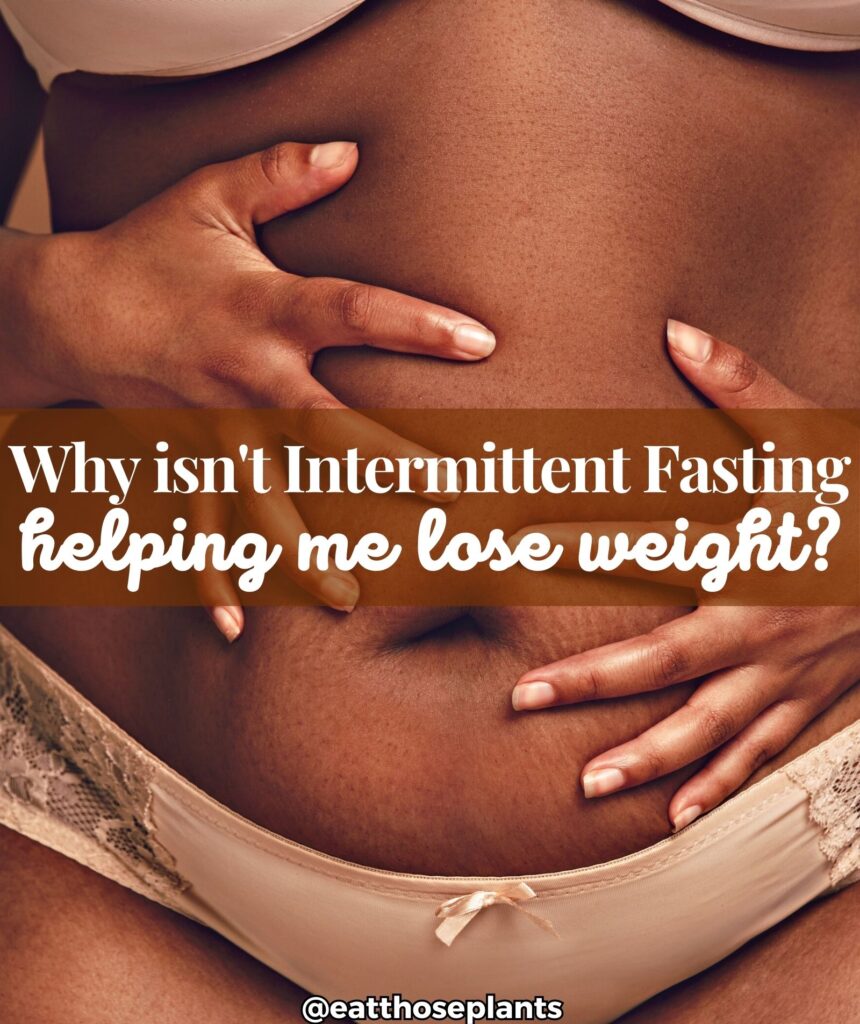At the time of writing this, I’ve lost over 50 pounds – and I owe it all to intermittent fasting and eating more plants. I went from 196 pounds at my highest, down to 143. Though I’m really happy with how far I’ve come now, I know first-hand what it’s like to try all of the things and wind up even heavier than you started.
It hurts. Bad.
While I’ve had great success using this approach, it hasn’t always been easy. But at this point, I can say for sure that I’ve learned a metric ton about fasting since giving it a try.
And today I’m going to share everything I know in this comprehensive guide to starting intermittent fasting for weight loss.
1- What Is Intermittent Fasting?
First, intermittent fasting is simply a method of eating where you restrict when you eat, rather than what you eat.
Some people mistakenly refer to intermittent fasting as a diet. But it is not a diet.
Diets restrict things and they don’t even work! In my experience at least, deprivation is the fastest possible track to failure.
Intermittent fasting is super-flexible in that you can technically eat whatever you want, as long as you do it within a certain period of time. More on that later.
Without intentionally restricting the period of time that we’re allowed to eat, most people have a steady stream of food every couple of hours from waking up until falling asleep at night. If you’re fasting, depending on the schedule you select, you won’t be doing that. You’ll automatically restrict caloric intake because you’re not eating constantly.
This is a good thing.
Pro Tip: Click here to discover EXACTLY what a 24-hour day of intermittent fasting looks like!
2- Why Intermittent Fasting?
There are so many benefits to intermittent fasting for weight loss, it’s incredible.
If you’re anything like me, you’re capable of eating perfectly clean and exercising on a regular schedule – but for a limited time only. Eventually the super clean foods get boring and you just crave the things you really want, right?
Or life happens and you fall off your exercise routine, the weight creeps back up and you’re demoralized so you throw the whole plan away.
Intermittent fasting is so great because it allows flexibility with what you eat, AND you don’t have to work out as much.
You still have to put in some conscious effort, mind you. But there’s room for any food that you like at least some of the time. AND, if you stay on your fasting schedule and eat reasonably well over all, you don’t have to kill yourself in the gym either.
It’s great!
3- How Does Intermittent Fasting Work?
As stated briefly before, it works by limiting the time during which you’re allowed to eat. In the next section we’ll talk more about the most popular intermittent fasting schedules.
But for now, a quick example would be instead of allowing yourself to eat whenever you’re hungry, you say you’re only going to eat within an eight hour window. So, 12 noon to 8pm.
4- Intermittent Fasting Schedules
If you know you have a specific preferred pattern of eating, it may be advantageous for you to make your intermittent fasting plan fit your lifestyle. Here are 6 of the main types of intermittent fasting schedules.
See if one of these appeals to you over the others:
- 16/8 to 20/4- The first number in the ratio is hours fasted, and the second number is the feeding window. A standard, basic fast means you’ll fast 16 hours a day and eat all your day’s food in 8 hours. This can vary and be stretched out to fasting 20 hours (or more) and eating in a shorter period of time (like 4 hours).
- 5/2- In this case, you’re eating very low calories (around 500 calories a day) for 2 days a week while eating normally for 5 days.
- Eat-Stop-Eat: This approach involves eating normally most days and incorporating a full 24-hour fast once or twice per week. Essentially amounting to fasting from breakfast one day to breakfast the next – or lunch, or dinner.
- Alternate Day Fasting: With this intermittent fasting plan you fast every other day, every week. Depending on your lifestyle and needs, you may fully fast (only calorie-free beverages – no solid food or calories) on fasting days, or you may eat very little (500 calories or less) on fasting days.
- Warrior Diet, OMAD: The Warrior Diet is essentially the same as one meal a day (OMAD) or is a 23:1 intermittent fasting plan. Probably the easiest of all, you don’t eat during the day, then eat one large meal at dinner.
- Spontaneous Fasting: There are no rules here, just skip meals when you feel like it or don’t feel that hungry. Probably the least strict of the bunch, but probably the least effective.
There are obvious benefits and drawbacks to each approach. You’ll have to decide for yourself which makes the most sense. You can always switch up if things don’t go as you think they will.
4 Daily Intermittent Fasting Schedules
Here we’ll discuss the four main daily intermittent fasting schedules. Some people like to add in extended fasts (fasting over multiple days or even weeks at a time), while others like alternate day fasting (where you fast 2 days out of the week and eat normally 5 days).
I’m writing and sharing from personal experience, however, and have not tried those. So, I’m going to cover what I know first-hand.
That’s different ways of fasting within a 24-hour period only – and still losing weight.
16/8 Intermittent Fasting Schedule
First is by far the most popular fasting schedule – 16/8 fasting. It’s pretty simple. Fast 16 hours each day, then eat all your day’s food within 8 hours.
For most people this means sleeping through the night, skipping breakfast, eating lunch around 12 or 1pm, then eating dinner by 8pm or so, and doing it all again the next day.
If you work a different schedule, like night shift for example, the hours would be a little different.
The way to figure it out would be to start your fasting window whenever you go to sleep, then when you wake up tack on whatever hours you need to get you to 16.
20/4 Intermittent Fasting Schedule
Second is a slightly more restrictive intermittent fasting schedule – 20/4. You fast 20 hours each day and consume your food within a 4 hour window.
If you’re totally new to the whole idea of fasting, you may be all like “wtf” about this. Believe me, I get it!
Though you probably wouldn’t want to start with something like this, I can speak from experience that over time you do get used to fasting and you may find yourself naturally reaching this point at least some of the time.
A big benefit of fasting longer is that it allows even more flexibility with what you can eat.
The fewer times you eat in a day, the more you can have when you do eat. This goes both for volume AND type of food.
Something to keep in mind around special occasions.
A sample schedule would be to sleep through the night, skip breakfast AND lunch, and eat around 4pm, cutting off around 8pm.
23/1 Intermittent Fasting Schedule (OMAD)
Third is an even more restrictive fasting schedule – 23/1. Also known as one meal a day (OMAD). And yes, it’s exactly what it sounds like – you eat one satisfying, totally filling meal within an hour’s time.
This is definitely not for a beginner (unless you just want to try it that way).
Again, speaking from experience, it sounds crazy, but it does have its time and place. And I swear the more you fast, the easier it gets! It really, really does!
OMAD Can Be Convenient
One of the benefits to fasting that I experience regularly is getting so focused on work. Not having to interrupt myself to eat means at least a couple times a month I get so engrossed in whatever I’m doing that time flies by and sometimes I hit 22 hours and realize I haven’t eaten. So, it’s nothing to just eat once those days.
Some people do this intentionally and regularly, though.
I do not have personal experience with this, so I can’t really say how good or easy it can get. But I’m sure you can adapt to it as easily as you can with the other intermittent fasting schedules.
You can get used to anything given enough time.
My ultimate favorite thing about this is if I know I’m going out for a major meal or celebration, I will plan a 23/1 OMAD fast. Like if I know I’m going to my favorite all-you-can-eat Brazilian BBQ restaurant, I’ll just bank all my calories for then.
I’m sure you’ll still go overboard with calories if you do it this way. But keep in mind this isn’t an everyday thing. MOST of the time you’re going to be eating reasonably. You just want to keep this little trick in your back pocket for wiggle room. So you can enjoy your life!
12/12 Intermittent Fasting
So, enough of the super long fasts, huh? Got you.
Some people say 12 hours isn’t long enough to fast, but I totally disagree.
As I stated before, I lost weight fasting just 12 hours a day (12 pounds in a month) and I highly recommend it. Especially for a few specific situations.
First, if you try 16 hours or longer and either find it too challenging to get started or keep falling off? Try starting with 12 hours just to get into the flow of things. Then you can raise it by one hour each week until you’re where you want to be.
Second, if you’ve been fasting for a while and have an upcoming vacation or something to where you know it’s going to be hard to maintain your regular schedule? Rather than falling off completely, drop it down to 12 hours so you can maintain some continuity.
I’ve done this on vacation before and I found that it was so helpful in keeping me on track! Because I ALSO went on vacation where I did NOT continue fasting in any shape or form and I regained every single pound – plus 2 more – and was unable to get back on track for two whole months.
Why totally derail yourself when you can just slow it down and have a hint of a chance at staying on track?
Finally, life happens. I’ve had a couple of times where I felt myself slipping pretty hard. Eating a little poorly too regularly. Giving in to cravings. Feeling like I’m starving super early in the morning…
During times like these? Drop that fasting window down to 12 hours.
Just don’t give up!
5- What Should I Eat To Lose Weight?
There are two ways to approach what to eat while intermittent fasting. And it’s going to depend on where you’re starting in your weight loss journey, how quickly you want to lose weight, and what your ultimate goals are.
The best thing I can say is when you’re just starting out, it’s a great idea to introduce one thing at a time.
That’s why, for the most part, all you have to do is just do fasting. For the first week or two at least, it’s a great idea to get your body and mind used to the intermittent fasting schedule before you alter your diet.
That way you’ll receive a quick motivational boost as you lose a few pounds straight away, and then you can decide your next course of action.
Now I’ll admit that I lost the majority of my weight after I started eating a more plant-based diet.
I would lose about 15-20 pounds with just intermittent fasting alone and could never get beyond that until I cleaned my diet up a bit.
A plant-based diet isn’t the only way to lose weight fasting, so while I do advocate for that lifestyle – you won’t find any pressure from me!
At the very least you should focus on “cleaning up” your diet – even if you never go plant-based or vegan.
And I’ll go over what a general “cleaner” diet looks like.
What Is Clean Eating?
Clean eating consists of mostly fruits and veggies, the leanest meat you can find, and whole grains like brown rice, quinoa, oats, and sweet potatoes. Avoid processed carbs as much as possible (donuts, candies, cakes, French fries, ice cream). And choose baked over fried as you can, too.
I’m going to be honest with you, here.
At this point in my journey I’ve grown used to eating mostly home-cooked foods, plant-based, filling. And it’s become so easy over time.
But in the beginning, as I said, I was a meat and cheese lover and I ate out all the time and I did still lose weight.
So no matter where you are in your journey you can still get some value out of trying intermittent fasting.
But for the sake of your health (and long-term success) – I hope you’ll choose to eat those plants! 🙂
6- What Can I Drink While Fasting?
Almost more important than what you can eat during your feasting window is what you can – and cannot – drink during your fasting window.
You can drink whatever you want during your feasting window, but the point of fasting is to consume zero calories at all – or else it isn’t really fasting, right?
The rules are a bit murky here. Some people say a fast is no longer a fast if you consume anything other than water. Others say black coffee, plain herbal tea and water are the only things you can drink.
Some say as long as calories are total zero, you’re fine (so truly zero-calorie artificial sweetener like Splenda or sucralose would work). And still others say if you keep calorie content very low, like maybe one splash of nonfat milk in your coffee, you would be fine.
You’re going to have to try different things to see what works for you.
Some people swear they don’t lose weight when they use artificial sweetener, and totally flavorless beverages are the way to go.
I’ve tried it different ways – black coffee, sugar-free energy drinks, things sweetened with sucralose. And I lose weight no matter what, as long as the calories are practically zero. But… that’s just me!
If you’ve been fasting for a couple weeks and haven’t lost much weight, and you’re still using artificial sweeteners or the occasional bit of milk in your coffee, cut it out and see if it helps.
My recommendation based on personal experience is to just try it the black coffee/unsweetened tea way first. You just may get used to it!
But if you find it insufferable and feel like you won’t be able to fast as long without adding some flavor to your life, go ahead and add a little bit and see if it helps.
For more detailed info on this topic, check out What Can I Drink While Intermittent Fasting?
7- Intermittent Fasting And Working Out
One of the questions I get a lot is “do I have to exercise while intermittent fasting”? The answer is yes – but not as much as you would without it.
As I stated previously, I find that even when I slip off my workout schedule some, as long as I monitor my food quality and remain on my fasting schedule, I definitely don’t gain anything, and may even lose a little.
Naturally, working out will help you lose more weight more quickly.
And for health reasons, you should get some form of exercise most days each week – even if it’s just brisk walking. Plus, you want a nice, toned body, not to be skinny and flabby, right?
Either way, yes, you can lose weight just by fasting alone if you have a nice size calorie reduction – but just because you can do something doesn’t mean you should.
Do yourself a favor and incorporate at least 3-4 days of some physical activity into your life while fasting.
You’ll be so glad you did!
When Should I Exercise While Fasting?
It’s really up to you when you should get your exercise in. You’ll have to see what fits your lifestyle and body best.
I find that cardio workouts tend to help me curb my hunger, while weightlifting makes me hungrier. For that reason, I really enjoy going for a jog first thing in the morning. I find I don’t even think about food until well in the afternoon on days I jog.
If I lift weights (which I do maybe once a week nowadays), it’s definitely after I’ve eaten.
Try different things and monitor how you feel! Just do something at some point most days of the week. That should be your goal if you’re just starting out.
8- How To Track Fasting + Fitness
So, once you have your schedule figured out, some idea of the types foods and drinks you’d like to incorporate into your diet, and a plan for getting at least a little exercise, you’ll need a way to track your progress.
Calorie Counting & Intermittent Fasting
One of the great things about intermittent fasting is that you don’t have to track calories – at least not at first. Usually just the reduction in food intake hours is enough to get the ball rolling. If you’re not losing any weight after a few weeks, however, it’s probably going to be time to spend at least a few days to a week counting calories, just to get you on the right track.
Here is exactly how to count calories, specifically for intermittent fasting.
9- What To Expect From Intermittent Fasting
Just like everything else in life, different strokes for different folks. Some people take really well to fasting straight away and will lose 5 pounds in their first week. Usually these people start at a very heavy weight. So, there’s just more to lose. No way of getting around that!
Also, water weight is totally a thing. If you go from eating high-sodium, processed carb-heavy foods around the clock, then suddenly eat a bit healthier within an 8-hour window, you will definitely see a huge whoosh within the first couple days. But it’s mostly water weight. Not a bad thing (I know seeing a big change is super motivating right)?
But on the flip side, if you’re starting out with less weight to lose, you won’t see as dramatic a change with intermittent fasting.
Also, if you’re already eating a fairly decent diet, you probably won’t see as big or fast a change either.
So, it could go either way.
My advice to you is to go in with no expectations other than to try it out and see what works for you.
If you lose 1-2 pounds your first week, you’re doing great! That’s truly sustainable weight loss that isn’t water weight, and you can lose 5-10 pounds in a month, which is excellent!
If it’s been a month and you’ve lost absolutely nothing – you may need to tweak a few things…
10- What If Intermittent Fasting Doesn’t Work For Me?
Finally, intermittent fasting isn’t for everybody, BUT before you throw in the towel, if it isn’t working for you there are probably a few key tweaks you can make to tip the scale in your favor.
I wrote about this at length in 10 Reasons Why You Aren’t Losing Weight On Intermittent Fasting, so if you’d like to read all ten, I recommend checking that out.
But the top two reasons are that you’re still overeating during your fasting window, and/or you’re not tracking all the right metrics.
Still Eating Too Much
It’s easy to think that just because you’re only eating once in a day, you can go crazy. This is not true. If you’re eating out a lot, you still need to be mindful of your caloric intake.
A Big Mac combo from McDonald’s with a burger, medium fries and a soda is going to run you about 1,100 calories. If you ate that plus another meal or snacks that day, you would totally blow it.
I still eat fast food quite a bit, so no judgement here! But I had to learn to be much more mindful. For example, avoiding drinking my calories, and getting familiar with looking at calorie counts on the menu before choosing what to get, to make sure I make better decisions. You might want to do the same!
Pro Tip: Count your calories for a little while… just a few days to a week. It’ll help illuminate any overeating issues you may have! Here’s the easiest way to track your calories on intermittent fasting.
Not Tracking The Right Metrics
So many people just stand on the scale and if they don’t like what they see, they’re ready to give up. This really isn’t the way to go because it doesn’t tell the whole picture.
To track real progress, you need to be measuring four things: weight using a biometric scale, measurements with measuring tape, see how your clothes fit, and progress pics.
Using A Biometric Scale
So, we all know that the scale is definitely a love-hate thing, but it’s important. What I did was get a biometric scale that tracks more than just body weight.
The one I use and recommend is the Renpho Bluetooth BMI Scale. This scale is so awesome because it’s 1/3rd of the price of the wildly popular Fitbit Aria scale and has everything you need to track your progress.
I like it a lot because it has a really cool free app that syncs seamlessly to your smartphone. And it tracks tons of different metrics that are crucial to understanding your progress.
For example, sometimes your weight can go up, but it’s because your muscle mass has increased while your fat has decreased.
This scale will show you that. It’ll also tell you your water percentage (so you know if you’re holding water weight).
This scale has really helped me track accurate measurements and sometimes has saved my sanity when I feel stuck at a certain weight.
Click here to grab one for yourself and see what I mean!
Taking Your Body Measurements
Next, it’s critical to measure your body using a measuring tape. I recommend the CareTouch brand on Amazon Prime. It’s super affordable and works like a charm!
You measure a few key areas at the same time each week (I do Monday mornings as soon as I wake up), and log them in your planner or tracker, and you can really see your progress that way too!
Sometimes it doesn’t show up on the scale at all, but you can see that you lost 3 inches over your whole body, and that’s still excellent news, right?
You definitely want that added reinforcement that your efforts are working!
Pro Tip: Here is exactly how to measure your body in five key areas.
Check How Your Clothes Fit
This is pretty self-explanatory. Just try on some clothes that were a little too tight before. If they’re looser – you’re making progress! Keep going!
Finally, taking progress pictures is so important because since we see ourselves every day, we often can’t tell our own subtle changes. But taking a quick front, side, and back pic once a month or so serves to show you what you really look like.
Nobody needs to ever see these pics – they’re just for you.
But trust me once you make the major transformation that lies ahead of you, you’ll be so glad you had the “before” pic to compare it to.
Be prepared to amaze yourself!
Oh and by the way…

If you’d like to get started with intermittent fasting or you want to take your intermittent fasting weight loss to the next level, what you really need is my Intermittent Fasting Weight Loss Planner!
It literally has everything you need to track fasting, strength & cardio training, pounds/inches lost, space for notes, slots for before & after pics, and three 30-day fitness challenge charts!
***CLICK HERE TO GRAB IT ON AMAZON***
Happy fasting! 🙂

